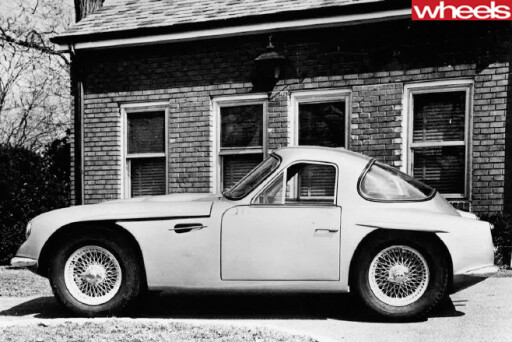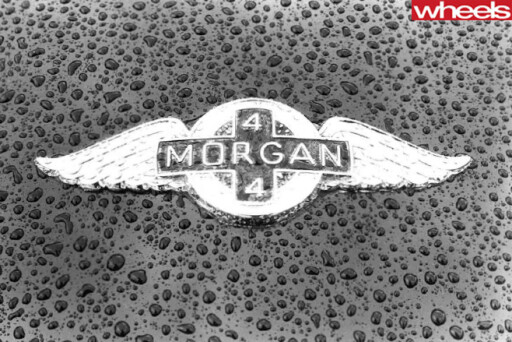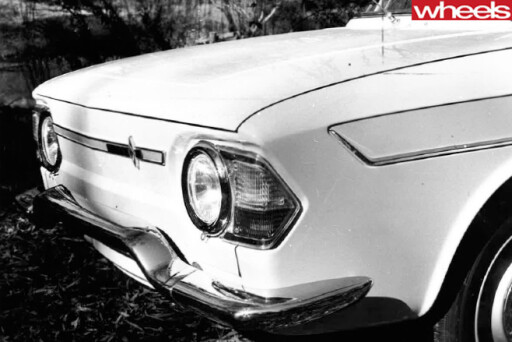
In a Wheels tradition that lasted nearly five decades, editors summed up annually in a personal column all the cars they had driven. Here is the late Bill Tuckey’s view of 1966.
First published in the December 1966 issue of Wheels magazine, Australia’s most experienced and most trusted car magazine since 1953.
We have a small, eager boy in this office who makes the coffee, files the photographs, graphs out the road test figures and sits at the feet of the masters. He also keeps the road test chart up to date. This is probably his most important task, for about this time every year I feel constrained to write about all the cars I have driven during the preceding 12 months, and if small eager boy isn’t up to the job I tend to forget some of the bolides that have been slipped under me since December, 1965.
Read former Wheels editor Peter Robinson’s story of how Bill Tuckey came to write this classic tale.
It hasn’t been a particularly exciting year for cars — a fact that is slowly dawning on us as we get closer to the annual judging of our Car Of The Year award — which will be announced in the next issue of WHEELS. Much of the material around this year has been warmed-up leftovers from 1965’s cold cuts, and I found little in engineering to get excited about. I gather, with some sense of horror, that I drove 52 cars during the 12 months, some of them cars for full testing, some loaned for impressions, some borrowed as curiosities, some used simply for transport. That’s an average of a new car every week, although I haven’t counted the many variations of the compact sixes that I drove from time to time.
 A few cars stand out — the Oldsmobile Toronado, the Morgan 4/4 Series 5 Competition, the Lancia Fulvia 2C coupe, the Alfa Romeo Giulia Super, the Mustang GT350, the Mazda 1000 coupe and the Datsun Sunny. For the rest, it was largely ho-hum country.
A few cars stand out — the Oldsmobile Toronado, the Morgan 4/4 Series 5 Competition, the Lancia Fulvia 2C coupe, the Alfa Romeo Giulia Super, the Mustang GT350, the Mazda 1000 coupe and the Datsun Sunny. For the rest, it was largely ho-hum country.
Mind you, my personal opinion of a car doesn’t count for much. Our evaluations of cars are based on a fairly well-proven system of objective argument, scales of measurement and some good old horse-sense. Very rarely do any small prejudices get very far.
I drove the usual array of compact sixes — all the Valiants, all the Holdens, but only the Fairmont version of the XP Falcon, this because Ford’s 1966 economy campaign left Sydney virtually nude of test vehicles. I still think the Falcon does the job best, although now that the v8 Valiant has discs it ranks as a reasonable but expensive competitor for this new CR, which is a long way ahead of the Holden in terms of engine, ride control and keeping its feet on the ground. I spent some time with the Austin 1800 early in the year, but I’ll hold back on that because we’re about to start a lengthy consumer test on the car to find out for you how it lasts over, say, 10,000 ordinary miles.
I found I could take or leave the VW 1600 slowback, although the styling I consider offensive, and the Renault Caravelle was exceedingly pretty, has finally got good performance, but is ridiculously overprices. To get back to earth one needs to spend some time driving the sub-$2200 cars, where sales competition is so fierce at the moment you wouldn’t believe it. A short acquaintance with the Mazda 1500 told me that Toyo Kogyo is building just about the best cars in Japan at the moment. Like the delightful Mazda 1000 coupe, the 1500 has a magnificent interior, very good road balance, precise steering and handling and — something few Japanese cars have — real individual character. The coupe is utterly charming, although from some angles it looks a bit stubby. Maybe next year they’ll build a proper white chap’s coupe body for it: meanwhile, it has a far more powerful sales argument than the Honda S600 coupe, which disappointed me with its lack of performance and interior noise.
 The new Bellet is street ahead of the old car in ride and handling, but is still cramped inside. The automatic version is a good buy. The Corona one tends to take for granted because it’s been around for so long, but you can’t get away from the fact that it looks value for money. The 1600S is quite charming, but the gearing is a bit wrong, and the two-speed Toyoglide transmission I can do without, thank you. The Crown Six is also excellent value, but I can’t help feeling that they would have been better spending all that money on cubic inches instead of overhead camshafts. Like the Datsun Big Six (or is it Cedric?) the Crown is very well-furnished, handsome-looking, but lacks joi de vivre — for want of a better term — in its performance character. But the little Datsun Sunny is well worth waiting for. It’s the sort of small four-cylinder the British would like to build but can’t, because they’ve forgotten how to go back to square one and start afresh. It’s neat, quite, goes hard and is very well put together.
The new Bellet is street ahead of the old car in ride and handling, but is still cramped inside. The automatic version is a good buy. The Corona one tends to take for granted because it’s been around for so long, but you can’t get away from the fact that it looks value for money. The 1600S is quite charming, but the gearing is a bit wrong, and the two-speed Toyoglide transmission I can do without, thank you. The Crown Six is also excellent value, but I can’t help feeling that they would have been better spending all that money on cubic inches instead of overhead camshafts. Like the Datsun Big Six (or is it Cedric?) the Crown is very well-furnished, handsome-looking, but lacks joi de vivre — for want of a better term — in its performance character. But the little Datsun Sunny is well worth waiting for. It’s the sort of small four-cylinder the British would like to build but can’t, because they’ve forgotten how to go back to square one and start afresh. It’s neat, quite, goes hard and is very well put together.
With another poor soul I drove the Volkswagen 1300 to Melbourne — and got quite a shock. You still have to row it along on the gearlever, but the extra capacity has improved the handling quite a bit.l it’s marvellous what a power reserve can do when you’re all crossed up in oversteer. You can’t deny the tremendous value in these cars, even though the interior is cramped and the performance marginal.
The Peugeot 404 charmed me greatly, if you can forgive Gallic logic in the gearshift and fairly sedate city traffic performance. You have to take this one out on the open road and screw it up to around 70 and keep it there. Then it’s something fairly special. But it could use some more inches. The half-brother Renault Ten is still the best car under $2000 in anyone’s language, and if you buy a car in this area without sampling the Ten’s braking, handling and interior comfort then you’d be better wash out your mind with soap and water. It’s a crying shame that this great car is outsold by some perambulating cases of terminal gerry-building. The R4 is also charming, in a rather farmyard sort of way. Romsey Quints though it was enormous, but he’s like that. He nearly went out of his mind with the Desert Rat.
The Hillman Imp MkII I can take or leave alone, mainly because they’ve set up the suspension in such a roundabout way to get any sort of decent handling, but the Minx and Gazelle are very pleasant, if still a little too much Rootes haircord carpet, understeer and acres of tree-wood. They have a good engine there and I’m glad to see it got a new body at Earls Court in the Hillman Hunter/Vogue group. From there to the Sabre 1000, which is really the Skoda 1000MB; it is a strange car, but as tough as dried squid and it, as we did, you grow to appreciate its many thoughtful points — the biggest of which is that it will almost certainly last 20 years given enough neglect — on which it thrives.
 There has been a surprising amount of heavy iron around this year. We waded through the Chevrolet Impala and Pontiac Parisienne, made much better by the 327 engine and the use of radial ply tyres on the test cars, plus the Galaxie, which wore some high-speed cross-plies and presented itself quite well. But the Dodge Phoenix impressed me the most; like the others, the mechanicals are largely unchanged from the previous year, but with its new reclining seat and headrest, some fiddling with the power steering, and improved brakes the Phoenix stood out.
There has been a surprising amount of heavy iron around this year. We waded through the Chevrolet Impala and Pontiac Parisienne, made much better by the 327 engine and the use of radial ply tyres on the test cars, plus the Galaxie, which wore some high-speed cross-plies and presented itself quite well. But the Dodge Phoenix impressed me the most; like the others, the mechanicals are largely unchanged from the previous year, but with its new reclining seat and headrest, some fiddling with the power steering, and improved brakes the Phoenix stood out.
So it should — it costs a lot more.
The best value of all this armour is the Rambler Classic 770 with discs, sensible size, good handling, bags of equipment, lousy steering and frightful facia. But it just makes so much more sense than the 199 in. wheelbase things. The Rambler American, to me, is neither here nor there. It doesn’t have as much poke as an X2 Holden but can’t be called an economy car. What it does have is one of the smoothest six-cylinder engines in the business.
There were quite a few imports to drive; we had two Toronados, one left and one right hand drive, and I like the car a lot except for the abominable brakes. The Ford Thunderbird was quite, cream-smooth, dramatically handsome and generally impressive while a Pontiac GTO convertible with 389 and stick shift was the fastest-accelerating car of the year. It was quite rough inside, but who cares?
I hauled a Mustang GT350 around for a few hours, but the limited slip differential wasn’t limiting or wasn’t slipping or something, so we treated it gently; it’s quite a rude car, and hertz must have their GT350H series gussies up a lot before they rent them.
There were a lot of good performance cars during the year. I renewed acquaintance with the two Volvos, leaving the B18 with the thought that it’s getting somewhat old-fashioned, and the Prince Skyline GT2000, which seems to improve with every car made and now almost handles properly; the 1275 Cooper rushed me down to Melbourne in eight hours flat observing all speed limits but using much oil and I liked the latest Sprite quite a lot. The Datsun SS needs proper suspension, while the Bellett GT could use wider rims, decent rubber and that’s all, for it’s a very good steerer and has all the right gear.
Then there was the Renault 8 Gordini, my choice as the country’s fastest point-to-point car under $4000, or the Alfa Giulia Super, which is an enormous motor car but needs a less boxy body to appeal to the wives who won’t let their husbands buy it because it doesn’t look four grand’s worth.
 The Lancia 2C coupe is a Lancia — and nothing more need be said. There were three MGBs (unfortunately, as one is enough for me) — a Peter Manton Motors/BMC Sports Car Centre GT version which was very comfortable, a J and S hardtop ditto and the normal soft top, which I hated.
The Lancia 2C coupe is a Lancia — and nothing more need be said. There were three MGBs (unfortunately, as one is enough for me) — a Peter Manton Motors/BMC Sports Car Centre GT version which was very comfortable, a J and S hardtop ditto and the normal soft top, which I hated.
I have reserved for the last the two most shattering cars of the time. There was the TVR Griffith 200, a short-lived and ill-concieved idea of stuffing a 289 Ford V8 into the TVR glass-fibre shell and undercarriage. You shoehorn into this, grasp a two-inch gearlever atop a huge quilted central tunnel and wait for the count-down. It goes so hard you just can’t keep it straight. The thing just thunders along in any gear, accelerating from 10 mph in top harder than an E-Type would in first. I spent five dazed days with it keeps doing wheel bearings and crown wheels and wheels spokes.
Finally there was the Morgan, I followed a staff man back from Sandown Park driving a Pontiac on a cold winter’s night, and he looked so stupidly happy in the Morgan that I pulled him over and swapped places. It was freezing, as the hood was down, as all Morgan hoods should be. But there is nothing — nothing — on this earth that points and stops and goes and obeys instantly every twitch of brewery cart and steers like a truck but it will see off any sports car costing less than$6000. And it just about made up for all the ordinary stuff I had to drive over that 12 months. Would you believe a Morgan 4/4 Series 5 Competition model as the Car of the Year?
WE DRIVE THE '67s
The new heater-ventilation System works well, apart from the nasty, cheap plastic outlets for fresh air on the facia. In ride, roadholding, steering and sound insulation the Viva is completely transformed. It rolls much less, it has lost that curious twitch as you set it up for a fast corner, steering is lighter and more accurate and the handling now remains neutral at surprisingly high cornering speeds. Stability is outstandingly good in a quick swerve and counter swerve or' in the transition in the middle of a fast S bend. Pressing on at rally speeds over mountain roads ·I gave the Viva high marks for steering, cornering and comfort. The disc brakes, vacuum-assisted on the SL, give a lot of confidence. The standard drum system requires more pressure but not excessively so. Both the standard engine and the 'SL are astonishingly flexible, pulling smoothly .in top gear from 20 mph, but gear changing is a pleasure with the short centre lever and good synchromesh on all four speeds.
SPITFIRE + 6 = JUNIOR E-TYPE
JT has long been obvious that Triumph's six cylinder engine could be fitted very neatly into the Spitfire chassis; in fact a conversion was offered by an independent firm at this year's Racing Car Show in London. Now Triumph has done it and added a hardtop two-seater coupe body styled by Michelotti to produce the GT6. Like the 2-litre Vitesse, it has a special version of the 1998 cc six cylinder engine with twin Stromberg horizontal carburettors and compression ratio of 9.5 to 1 to produce 95 bhp at 5000 rpm. It drives through an 8.5 ins. diameter clutch with diaphragm spring for light pedal action to a gearbox with synchromesh on all four speeds controlled by a short lever on the centre tunnel.
Chassis design is basically Sptifire, but the centre of gravity has been lowered slightly at the rear to maintain negative camber on the wheels as far as possible, and stiffer bushes are used in the radius arms locating the swing axles. The rack and pinion steering is retained with the adjustable and collapsible steering column giving a range of 4 ins, and the three-spoke steering wheel has a leather-covered rim. To cope with the much higher performance the GT6 has disc brakes of 9.7 ins. diameter up front and 8 ins. drum brakes at the rear.
The new permanent coupe top harmonises well with the basic Spitfire body lines and the, big rear window opens for easy loading of luggage. The GT is strictly a two-seater, both seats having deeply curved backrests which give good lateral support and the seats tip forward to reveal pockets for packages below the main luggage platform. There is a padded centre armrest, the passenger has a grab handle; facia top, parcel shelf and door waist rails are padded. Interior trim is in Ambia with walnut facia and moulded pile carpets. Standard Triumph has succeeded in producing a fast car which is comfortable, quiet and flexible. You can drive it in top gear in a way that is probably not possible with any comparable car and still pass most other traffic and if you use the gears it will go from 0 to 50mph in under 8 secs and 0 to 60 in about 11 secs. I saw 100 mph on the speedometer and the absolute maximum is said to be about 107. Steering is light and transmits very little shock. It needs only 4.25 turns from lock to lock to produce the unrivalled Triumph turning circle of 25.5 ft. It is probably going to be regarded as a junior E-Type, but I'd like it still better if it had some sort of compensator spring for the rear swing axle.

COMMENTS